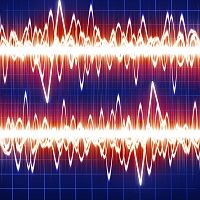Dystonia: Why Some Patients Respond Better to Deep Brain Stimulation
Researchers have found that, in children with dystonia, pallidal firing rates differ depending on the cause of the disorder.

Researchers have found that, in children with dystonia, pallidal firing rates differ depending on the cause of the disorder.
A study conducted by Verity McClelland, MD, of the Department of Basic and Clinical Neuroscience at the Maurice Wohl Clinical Neuroscience Institute at King’s College in London, and colleagues, published in the Journal of Neurology, Neurosurgery & Psychiatry, details the findings.
Dystonia can be primary, where the only feature of the disease is muscle contractions that may cause abnormal, repetitive movements, or it can be secondary to some other disease or brain injury.
There are two types of secondary dystonia, including static lesions, and progressive disorders. Static lesions usually occur after hypoxic ischemic encephalopathy (HIE), prematurity, infection, a metabolic disturbance or a vascular event, and progressive disorders include “heredodegenerative dystonias, which are characterized by neurodegeneration,” according to the researchers.
Most children have secondary types of dystonia.
One of the most well-established treatments for dystonia is deep brain stimulation (DBS) of the globus pallidus interna (GPi), though it is more effective for people with primary dystonia. In this study, the researchers say they “analyzed microelectrode recordings from the GPi and globus pallidus externa (GPe) in 44 children undergoing DBS for severe generalized dystonia, aiming to test the hypothesis that pallidal firing differs between different dystonia etiologies.”
The researchers report measuring the mean firing rate, the interspike interval distribution, and the instantaneous firing rate, and they classified cells as regular, irregular or bursting based on watching the cells during the firing pattern and the interspike interval distribution, as well as the instantaneous firing rate.
“We identified 263 GPi and 87 GPe cells from 81 electrode trajectories. In three patients, no active cells were identified,” said the researchers. The three with no active cells were excluded due to the possibility of a technical problem, but they also considered the possibility of “silent cells” in those three cases.
The goal of this study was more related to GPi than to GPe, and so, the researchers said, “therefore the path through the GPe was not strongly considered in the targeting of the trajectory. Some paths may have had very little GPe involved.”
The researchers concluded that they were able to “demonstrate GPi and GPe firing rates and patterns correlate with dystonia etiology and phenotype, providing further evidence of differences in the pathophysiology of primary versus secondary dystonia.”
They suggest that it understanding the different mechanisms involved will help explain why patients with secondary dystonia have a poorer response to DBS, and that further investigations are warranted.